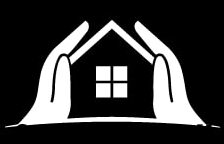Perceiving an awful smell from your sink can instantly change your mood and make you lose your appetite.
Most sinks are clogged with food particles, hair strands, or rusted metal. When these food particles begin to degrade, they produce an awful odor.
Cleaning agents like vinegar or baking soda can clean your sink or clogged drains. Here are practical steps on how to clean a sink with baking soda.
- Clear and rinse the sink
- Sprinkle the sink with baking soda
- Use dish soap with a sponge or damp towel to scrub around the sink
- Scrub the sink from top-down and rinse down
- Sanitize with vinegar (Including faucets and sink handles)
- Rinse thoroughly
Read on in detail on how to clean a sink with baking soda, how to clean a clogged sink using vinegar, salt, and baking soda, and tips to prevent your sink from clogging.
Table of Contents
- Why Is My Sink Clogged?
- How to Clean a Sink With Baking Soda
- How to Clean Clogged Sink With Vinegar and Baking Soda
- How to Clean Clogged Sink with Salt and Baking Soda
- DIY Sink Cleaners without Baking Soda
- Pro Tips to Prevent Your Drain From Clogging
- Conclusion
Why Is My Sink Clogged?
Considering how much we use the sink, it’s not a surprise why they often get clogged with grime and food particles.
Since we cook and do the dishes almost every day, it’s safe to say that food particles get stuck in the drain daily.
Some get flushed down by the pressure from the tap water, while the stubborn ones do not move, and over time, you find out that the drain is blocked.
You’d hardly notice if you use a long piping system until the grime begins to give off a combination of metallic and rotten food odor.
However, you can use everyday items around the house to unblock clogged sinks without touching the pipes.
To unclog blocked sinks, you’d need items like:
- Baking Soda
- Vinegar
- Dish soap (Dawn)
- And hot water
How to Clean a Sink With Baking Soda

Easy steps on how to clean a sink with baking soda include;
Step 1
Clearing and rinse the sink. Take out any dishes in and around the sink area to give you more room to work on the sink.
Rinse any visible debris in and around the sink. You can either take it out or flush it down the drain.
Since you’d be cleaning it entirely, you don’t have to worry about getting stuck in the drain.
Step 2
Scoop a tablespoon or two of baking soda in the sink focusing more on the drain opening. You can add an extra spoon in that area.
Step 3
Use a small amount of dish soap on a clean sponge or damp towel to scrub around the sink.
Follow the sink’s grain when scrubbing and gently scrub all around to prevent streaks. Since baking soda isn’t a string abrasive, there’d be no scratches on your sink.
Alternate between a sponge/ towel, a toothbrush, or any brush that can fit into the drain opening and scrub thoroughly.
Step 4
Use a cup of vinegar to rinse off the baking soda and wash down any grime the baking soda must have absorbed.
Use enough vinegar in the drain opening. The vinegar reacts with baking soda, so you’ll see a lot of foam from the reaction in the drain.
Cover the opening with a towel to prevent the foam from pouring back into the sink, or leave it open and rinse later with water.
Step 5
Pour a full cup of hot water directly down the drain. You may perceive the smell metallic smell and rotten food odors, but it will last only for a short while.
Using the faucet from the sink, turn it to full pressure and wash down the remaining baking soda and vinegar or foam from the reaction.
Step 6
Soak other drain covers in a mixture of vinegar, baking soda, and warm water for 30 minutes and use a brush to scrub them. Rinse with room temperature water and clean with a dry towel.
Step 7
Use a dry towel to clean the entire sink dry. Check for streaks or hidden dirt, and use the towel to clean properly.
Alternatively, you can use a second method of unclogging your drain using baking soda and vinegar.
How to Clean Clogged Sink With Vinegar and Baking Soda
Step 1
Begin by boiling 6-8 cups of water.
Step 2
Pour boiling water and dish soap into the drain. Slowly pour boiling water down the drain, being careful not to burn yourself. This DIY combination will help to remove any greasy clogs in your sink.
Step 3
Pour two tablespoons of baking soda into the drain and around the opening.
When pouring baking soda down a smaller drain, you may need a funnel or pour it directly into the drain from your measuring cup.
Push any baking soda that falls into the sink into the drain with your fingers.
Step 4
Pour half a cup of vinegar down the drain to unclog the drain. Cover your drain with a plug.
This will create pressure in the closed drain that will help to remove the clog. Don’t worry about any noise you hear. It’s the vinegar reacting with the baking soda.
Let the baking soda and vinegar sit in the drain for at least 10 minutes, or wait until you hear no fizzing from your sink. Set the buzzer for 10 minutes.
It is better to wait longer than flush the drain too soon to give the vinegar and baking soda time to work.
Step 5
Pour 2 cups of boiling water down the drain carefully if it is clogged. Suppose it is unclogged, run hot water down it for 5 minutes to clear any residue.
You may have to repeat these steps 2 or 3 times if the drain does not drain. Keep adding hot water until a clear sound of water flowing through the drain appears.
If vinegar and baking soda aren’t working, you may need to clean your drain with salt and baking.
Read: Does baking soda and vinegar dissolve hair in a drain? Explained
How to Clean Clogged Sink with Salt and Baking Soda
Step 1
Pour 1 cup of baking soda into the sink. Depending on your drain size, you may need to use a funnel if you pour baking soda directly into the drain from the measuring cup.
Step 2
Pour ½ cup salt into the drain. Let the baking soda and salt sit in the drain for a few hours or overnight.
Step 3
Flush it with 2 cups of boiled water and carefully pour it down your drain.
Step 4
To remove any residue from the drain, flush it with hot tap water for several minutes if the drain begins to drain.
Re-try the steps once or twice if you need help clearing the clog. Otherwise, you may need to disassemble the drain.
DIY Sink Cleaners without Baking Soda

One cause of concern for DIY enthusiasts and people who avoid chemicals is that they’d always think of a more straightforward yet effective way of doing the same thing as with chemicals.
Not just for them but other people who have a clogged sink yet do not have these cleaning agents around the house.
Fortunately, there are alternative ways to unclog a drain without using baking soda or even vinegar in some cases.
Method 1: Dish Soap and Hot Water Mix
Boil a liter of water and add two tablespoons of dish soap to the hot water. Use the water to flush the drain and more hot water to rinse it.
This may sound too common, but it works for greasy clogs. Pouring hot water down the drain continuously gradually melts the grease and unclogs the sink.
It may take more time if the clogs are more than just grease, but it is an effective way of clearing a clogged kitchen sink.
Method 2: Wire Hanger
Straighten out the wire hanger leaving only the hook. Hold the straightened end firmly while you push the hook down the drain.
Use the hook to pull out any blockage you find. Before you begin this process, keep a thrash paper bag by the side to collect all the thrash you’d be pulling out from the drain.
Pull out as much as possible, and when you’re sure that’s how far you can go, pour steaming hot water down the drain repeatedly until it is open.
Method 3: Plunger
This method works better with the wire hanger method since there’s so much the hanger can pull out.
After pulling out the dirt and using warm water to flush it, use a rubber plunger to plunge at the sink’s opening for other dirt hanging in there.
One thing with the DIY alternatives is that it may take longer than using baking soda and vinegar.
However, it is very safe for yourself and the environment since you won’t be inhaling any chemicals or polluting the air with the chemicals.
Some of these cleaning agents also contain sulphuric acid or sodium hydroxide.
These elements gradually eat away the pipes (Plastic or metal pipes), and in the long run, you’d end up with leaking pipes. So, although they’re very effective and quick actions, they have consequences.
Read: Drano in Dishwasher – Can I Use it & is it Safe?
Pro Tips to Prevent Your Drain From Clogging
These simple hacks will keep your sink drain from clogging, and you won’t have to buy expensive chemicals to clean it.
1. Don’t Put Coffee Grounds in the sink
Coffee grounds do not break down when immersed in water; instead, they clump together and will clog your sink.
2. Pour Hot Water Down Your Sink
Pour a hot water kettle down your drain once a week to melt the grease away. Be careful not to splash yourself with the water.
3. Never Pour Oil or Grease Down the Drain
Before you wash your pan, pour the oil and grease into an old can that you can throw away after the oil and grease have congealed.
4. Use a Paper Towel to Wipe Greasy Pans
To prevent grease from going down your sink drain and potentially blocking it, wipe greasy pans with a paper towel before washing.
This will remove large grease and prevent grease from clogging your sink drain.
5. Use Strainer Baskets
Ensure all your drains have strainer baskets to prevent food particles and hair from going down the drain.
Read Also: How To Get Rid of Plastic Smell on the Stovetop
Conclusion
Hopefully, this article has given an in-depth discussion on how to clean a sink with baking soda. Baking Soda and vinegar are the most common cleaning agents you can find around the house.
They’re originally not made just for cleaning but combining the duo sparks a reaction that leaves everywhere fresh and clean.
Although there are many other methods of using baking soda to clean the sink, the steps listed above on how to clean the sink with baking soda are very simple and straightforward.

